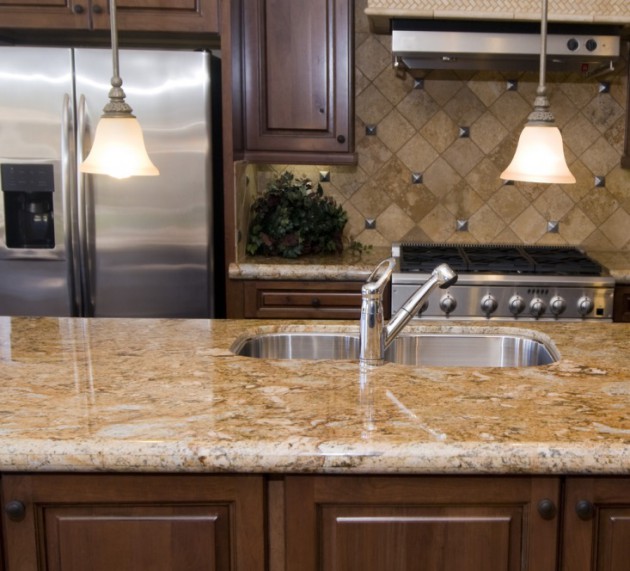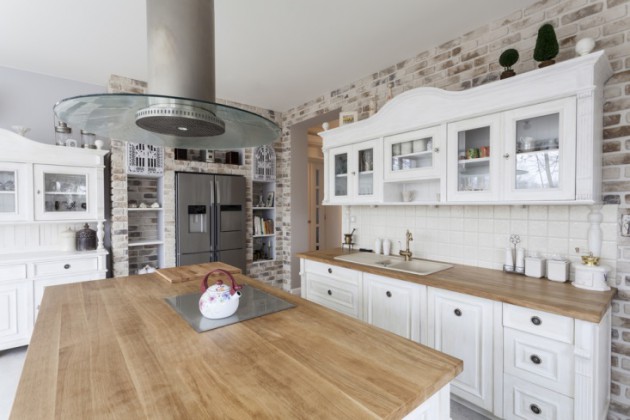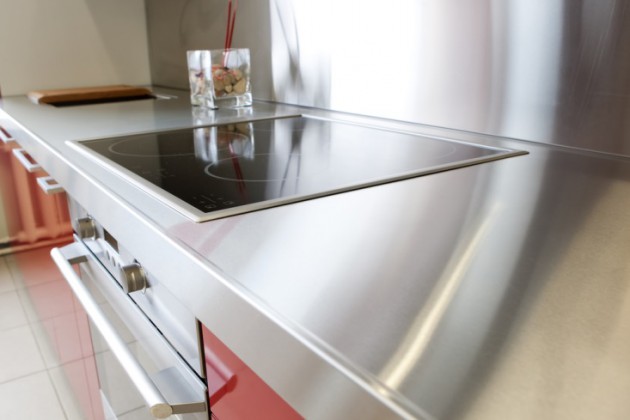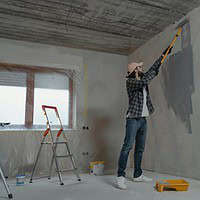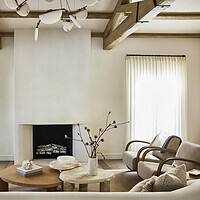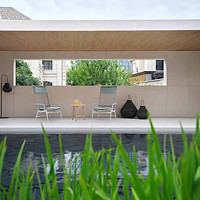Granite has had a long run as the kitchen countertop of choice for new homes and people remodeling older homes. It has plenty of benefits, but there are other choices that are equally good or even better. And let’s face it, granite is starting to look sort of been there, done that, and it doesn’t fit into every design scheme. Here’s a comparison of granite to some of the other great surfaces out there.
Granite
Granite and its cousins marble and travertine are natural stones that come straight from the earth in varied colors and distinctive patterns. Their beauty is undeniable, and they will last forever, but they do require maintenance.
Natural stone is porous and is subject to staining by oils, red wine, and other deeply pigmented liquids. It’s also subject to etching by acidic foods. To forestall this kind of damage, these surfaces require filling and periodic sealing.
In addition, while they’re highly heat-resistant, they can be cracked or chipped if something heavy is dropped on them.
Quartz
“Engineered” quartz is a conglomerate of ground natural quartz and binding resins that gives the appearance of solid stone but is significantly stronger, more durable, and easier to care for. Because it’s non-porous, quartz is resistant to staining and acids, and it stands up well to heat and impact. It comes in a vast array of solid colors and also in finishes that mimic the veining of granite and marble.
If you’re debating between granite and quartz, it might help you to know that their prices are generally comparable. Selecting one over the other is a matter of choice, not cost. If you’re going to be putting the purchase of either one on a credit card, however, you’ll want to pick a card that gives you the best rewards.
Butcher Block
The warmth of wood adds a homey country-style look to a kitchen, even if it’s just used as a portion of the total countertop area. Traditional butcher block is formed from pieces of hardwood laminated together, and while typically made from maple, it can be found in walnut, mahogany, and other woods.
Sealed to protect against bacteria, butcher block is a great surface for food preparation, and it’s friendly to dishware that may hit it a little too hard. A great thing about a wood countertop is that it can be repaired or refinished if it gets stained or scratched.
Concrete
Cool, contemporary, and trending upward are kitchen counters made of poured concrete. Because they’re cast to individual specifications, concrete countertops can be formed in any shape, so they’re perfect for irregular or curved surfaces. The general mixture that makes concrete is cement, sand, water, pigment, and reinforcement fibers. But you can customize it by including stone fragments, recycled glass chips, seashells, or, actually, anything that piques your fancy.
Since concrete countertops are poured to order, you can also build in other elements to the casting, like drain boards, soap dishes, or sinks themselves. Concrete needs to be sealed periodically, but upkeep is simple. And if it should be damaged, for example by a heavily dropped pot, cracks and chips can easily be filled.
Stainless Steel
Another sleek modern surface, stainless steel has been moving from the commercial kitchen to the home. It’s nonporous, hygienic, resistant to heat and stains, and easy to clean.
The downside is that stainless steel scratches pretty easily, and can dent. If you like the idea of a shiny metal surface, you might also consider copper or zinc for selected countertop areas.
Ceramic Tile
This classic countertop most of us grew up with, ceramic tile comes in every imaginable color and design, and is stain and heat-resistant. It’s not the easiest to keep clean, though, since the grout has a tendency to collect tiny bits of gunk and can stain over time. But that aside, ceramic tiles are among the lowest cost countertop options and have another great budget benefit in that, with a little instruction, you can install them yourself.
Laminate
Formica was all the rage in the 1950s, but today’s materials are more durable and are available in a much wider range of colors as well as patterns that resemble granite, wood, and other finishes. Laminate is made from thin layers of resin-treated paper on a base of chipboard, pressed together under high heat, and coated with a form of plastic. It’s susceptible to scratching, staining from acidic liquids, and damage from hot pots, but it’s also a clean, smooth surface that’s a versatile answer for low-budget installations.

